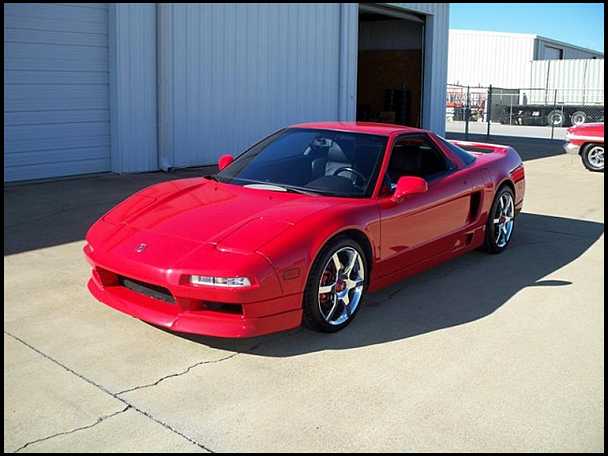Buyers Guide 1991-96 Acura NSX
Every so often a car manufacturer builds a car so out of its normal range that the whole automotive world stops to stare at it. Such was the case with the Acura NSX.
Development began as early as 1984, and when Honda debuted the car as an Acura model for America in 1990, the automotive press raved. The company had come up with a winner, and in many comparison tests, it regularly trounced its Porsche 911, Chevy Corvette and Ferrari 348 competition.
The Acura NSX is sophisticated in many regards, and technology developed in Honda’s Formula One program trickled into the car. Its aluminum 3.0-liter V-6 produces 270 hp and features dual overhead cams and variable valve timing. The unit is mounted transversely midship, and balance is impeccable — even on the limit. The car was the first to utilize an all-aluminum monocoque body, and it also features an aluminum suspension, both of which keep weight down. Much of the development input came thanks to Honda’s ace F1 driver, the late Ayrton Senna.
The NSX became Honda’s flagship overnight, as well as the most expensive Japanese car in America. But it was still a Honda, which meant reliability had been built-in: It is happy to rev at 8,000 rpm all day and then do it again without much incident.
The car came standard with a five-speed manual, though a four-speed auto was offered shortly after introduction. Cars so equipped tend to trade for a slightly lesser price, not only because you’re missing a pedal, but because horsepower in those models dipped to 252 hp. Traction control, ABS, driver’s airbag, leather and power everything round out the package.
Today these cars trade in the high teens to mid-five figures — roughly $18,000 to $65,000 — and like anything, you get what you pay for.
Because of their Honda bloodlines, NSXs tend to get driven, and plenty of high-mileage examples exist. Unlike, say, a contemporary Ferrari, that’s not necessarily a bad thing, but be sure to insist on thorough documentation to show that care has been taken. Timing belts need replacement every 90,000 miles. Some early cars had issues with the ABS control unit, so make sure that’s been addressed. Some 1991 and ’92 five-speed models had bad transmission countershaft snap rings, so insist on proof that the problem has been fixed, lest your gearbox eat itself. Also, be sure to check out coolant reservoirs, which had some leak issues.
The biggest issue to consider with an NSX is the body. With all that aluminum, you don’t really have to worry about rust. What you do have to worry about is the cost of repairing it. Many shops won’t touch it, and those that do will charge you handsomely. And then they have to paint it, which is its own expensive proposition. View any potential car in plenty of light, from all angles, to check for repairs. And remember that the old magnet-on-Bondo trick won’t work for these babies.
OEM replacement parts, too, are pricey, so factor that in. These were supercars after all, and just because they were built by Honda doesn’t mean Civic taillights will work in them.
Avoid any car with questions; there are just too many NSXs out there to settle for an iffy one simply because it’s dirt cheap. If you’re serious about acquiring one of these great-driving, affordable exotics, check out Honda and Acura forums and read what members have to say. Ask questions, and try to find the best, most reputable shops in your area. A pre-purchase inspection at one of them is a must, because they’ll spot all the things you don’t.


